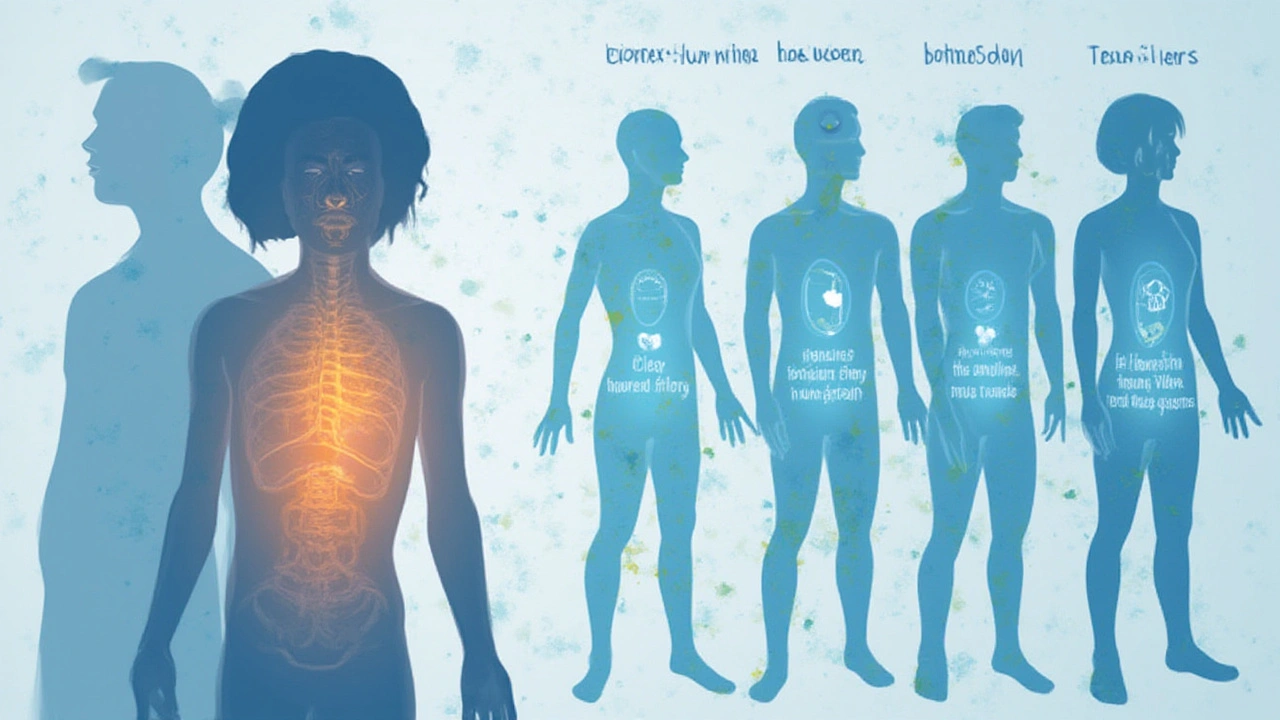Imagine waking up with itchy eyes and a nose that feels like it’s full of cotton—then remembering there’s an allergy medicine that might actually let you feel normal again. That’s the promise of Clarinex, but you might wonder if it’s actually worth the hype or if you’ll end up with your head in a fog anyway. Spoiler: Clarinex could change your whole allergy season, but it’s not magic. There’s more to it than just grabbing a pill and hoping for the best. So, let’s peel back the curtain on this little blue tablet and check out what’s really going on behind the pharmacy counter.
How Clarinex Works: Behind the Blue Pill
First things first, Clarinex isn’t just a catchy name thrown onto any old allergy pill. Its generic name is desloratadine, and it showed up in the early 2000s with a promise: calm your allergies without making you feel like you need a nap right after breakfast. That’s because it falls in the group known as non-drowsy antihistamines, which means you can take it before work or class and not end up dozing off halfway through a meeting or a lecture.
Here’s how Clarinex actually works. Allergies might seem simple but they’re basically your immune system throwing a tantrum over something harmless—like pollen, pet dander, or dust mites. When those triggers hit your system, your body releases histamine, which is what leads to all the sneezing, itching, and congestion. Desloratadine steps in and blocks those histamine receptors, so you don’t get slammed with all those symptoms. In technical talk: Clarinex is a selective H1-receptor antagonist. In regular terms: it tells histamine to back off.
Skeptical? There’s good reason to be. Not every “non-drowsy” formula is actually non-drowsy for everyone. But Clarinex is less likely to cross into the brain than some older meds (think Benadryl), so there’s actually a lot less of that spaced-out feeling. Studies have put it head-to-head with other leading allergy meds, like loratadine and cetirizine, and Clarinex tends to come out looking about the same or a little better at controlling symptoms—without the sleepy side effect people fear most.
What’s more, Clarinex doesn’t just handle sneezing. It’s been shown to help with watery eyes, hives, and some forms of skin allergies, too. And for people who have perennial allergies (the kind that won’t let up no matter what time of year), taking Clarinex daily can keep symptoms in check. A clinical trial looked at patients over six months and found that regular dosing cut down allergy nose symptoms by an average of 38% compared with placebo—impressive if you’re desperate for relief.
How fast does it work? Most people start feeling better in about an hour after taking a 5 mg Clarinex tablet, and the effect can last a full 24 hours. That means one pill a day is plenty—no need to set extra alarms on your phone.

What to Consider Before Taking Clarinex
Pop quiz: should you just buy Clarinex and call it a day? Not always. Like most medicines, Clarinex isn’t perfect for everybody. Keep a close eye on a few things before heading to the pharmacy.
First, check your history with allergies and meds. Clarinex is safe for most adults and kids over six months—but only if prescribed by a doctor in really young children. For adults and older kids, it’s usually one 5 mg tablet a day. But double-check the label if you’re thinking about giving it to your child, since the dosing for syrup versions (which come in 2.5 mg/5 mL) is lower for little ones and depends on age and weight.
Allergic to desloratadine or loratadine? Skip Clarinex—your body might react badly, and that’s a mess nobody needs. You also need to be careful if you have liver or kidney trouble, since desloratadine is cleared from your system mostly by your liver and kidneys. If you’re pregnant or breastfeeding, only use it if a doctor says it’s absolutely necessary—the safety data in pregnancy is still kind of thin.
What about side effects? You’ll find that most people tolerate Clarinex really well. The most common complaints are dry mouth, a slight headache, or tiredness (even though that’s rare). Less than 3% of people in studies had any side effect they noticed. Here’s a quick look at some possible issues from actual data:
| Side Effect | People Reporting (%) |
|---|---|
| Dry Mouth | 3 |
| Headache | 4 |
| Sleepiness | 1 |
| Nausea | 2 |
| Fatigue | 2 |
Want to cut your risk of issues even further? Always stick to the recommended dose. Don’t mix Clarinex with other antihistamines unless a healthcare provider gives the green light. And if you’re already on meds for depression or heart problems, mention those, since there’s a slim but real chance of a drug interaction, especially with some specific antifungals and antibiotics. Reading the full patient information or asking your doctor is smart if you ever feel unsure.
Oh, and here’s something interesting: Clarinex comes in branded and generic options now. Generic desloratadine has been FDA-approved since 2012, so you can usually save quite a bit by asking for it. For most folks, there’s no difference in how it works, but some swear the brand name works better—placebo effect or not, no shame if you prefer it!

Maximizing Allergy Relief: Tips, Myths, and Real-World Advice
Now, let’s talk about what really helps when you’re facing allergy season armed with a box of Clarinex. First rule: medicine can’t handle everything if you’re living in a sea of pollen. If you start with these small tweaks, you’ll get better results from your daily dose.
- Keep windows closed during high pollen days—even if it’s stuffy inside.
- Wash hands and face after being outside, and toss your outdoor clothes in the wash.
- Use a HEPA filter for your air conditioner or vacuum. It actually makes a big difference in pet and dust allergies.
- Shower before bed so allergens don’t stick to your pillow all night.
- Check your local allergy report—it’s a quick Google or weather app search.
- Avoid drying laundry outside during high pollen months. Yes, the sun is nice, but so is breathing.
- Manage nasal congestion with saline rinses if you need extra help—no prescription needed.
- If you know your triggers (like cats or certain foods), make a plan for when you visit friends or restaurants.
Ever heard someone say allergy meds stop working after a while? That’s a popular myth. Your body doesn’t “get used to” Clarinex in a way that makes it weak or useless. If your symptoms flare up suddenly, it probably means your allergy exposure changed (a new pet, moving house, or a massive shift in pollen), not that the medicine quit on you.
Keen on some surprising facts? Here’s one to bring up at your next allergy rant session: in a recent survey of 1,500 allergy sufferers taking non-drowsy antihistamines, just under 8% said they had to skip work because their meds made them too tired. By comparison, the number drops below 2.5% with Clarinex, so the risk of missing out on daily life is low. Another fun tidbit—while most people reach for the pill during spring or fall, about 40% of regular users actually take it for year-round allergies inside their own homes. Blame dust mites, mold, and pets.
And here’s a tip for parents: Clarinex oral syrup is sweetened, but it’s sugar-free, making it safe for kids with diabetes or those on low-sugar diets. For teens dealing with both allergies and school exams, the low risk of drowsiness is a game changer—they won’t get that foggy “antihistamine brain” that can make test taking even more stressful.
Some people ask if Clarinex can be split in half or taken only as needed. The answer? Best to stick to one whole 5 mg tablet daily, since regular use gives more consistent relief. The only exception is for some kids who get a smaller dose, arranged by their doctor. Don’t double up to catch up if you miss a day—just pick up where you left off.
Ever wondered if all antihistamines are safe if you’ve got other medical problems? Clarinex does have a pretty good track record, even for those with high blood pressure. Unlike decongestants (which are sometimes mixed into allergy meds), it doesn’t spike your heart rate or blood pressure, so you won’t be putting your heart at risk just to breathe easier.
And if you’re a fan of number crunching, here’s how Clarinex stacks up in the U.S. as of early 2025: last year, there were roughly 7.2 million prescriptions filled for desloratadine and its brand version, making it the fifth most popular allergy medication in the country. That’s a solid sign it’s trusted, but also a hint to ask your pharmacist about the best insurer-covered or coupon-discounted options—they change a lot every year.
One last thing that rarely comes up in the advertising: allergies don’t always need a prescription solution. If you have mild symptoms, you can probably manage just fine with non-prescription versions, like generic loratadine or cetirizine. Clarinex steps in when those just aren’t enough, especially for tougher or more stubborn symptoms. And if nothing else works, see an allergist to check if you need allergy shots or a new diagnosis, because sometimes what we call allergies turns out to be something else entirely.
This isn’t a sales pitch—just the real scoop from one allergy survivor to another. Knowledge is power, and Clarinex might just be the smartest move you make this allergy season if you’ve had it with red eyes and endless tissues. Always double-check with your doctor before starting a new medicine, and keep your sneezes to yourself. Or, at least, keep them off my keyboard!
